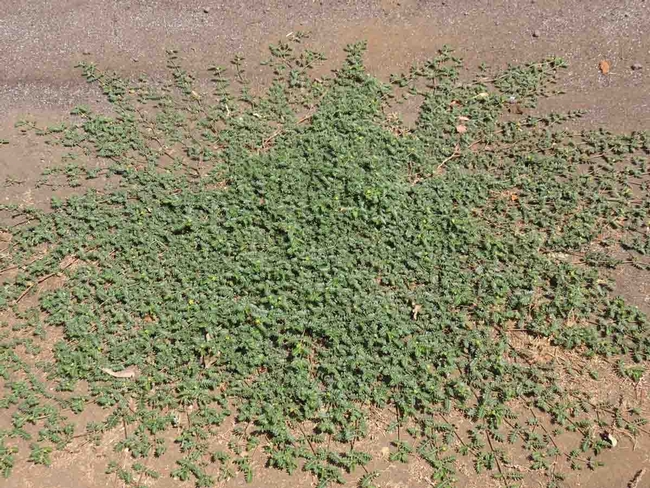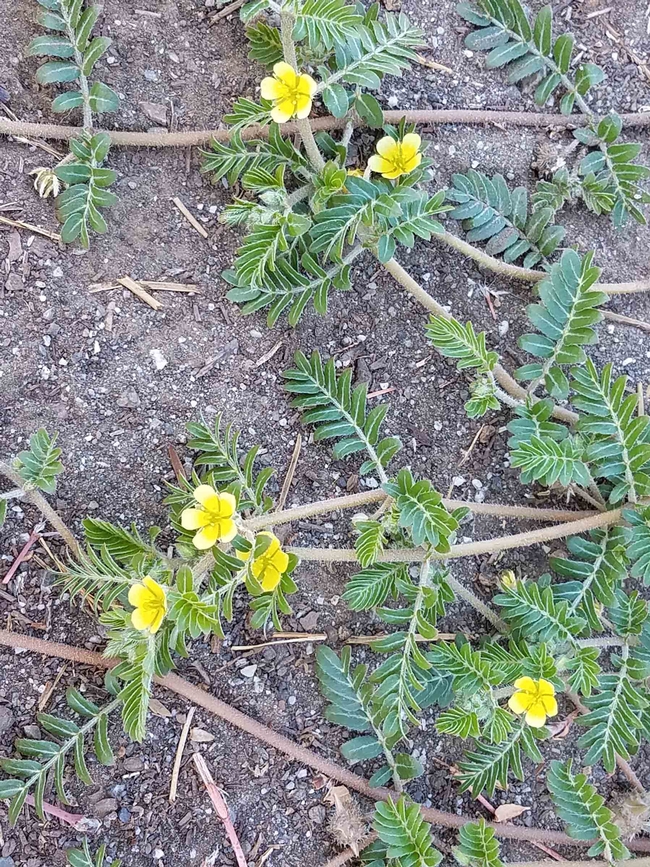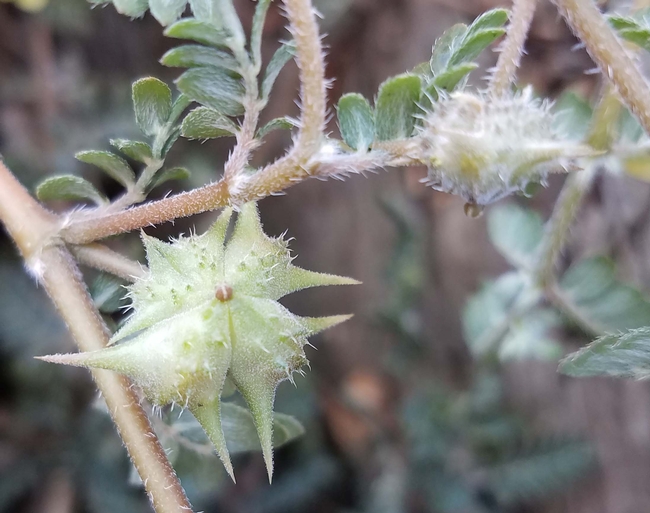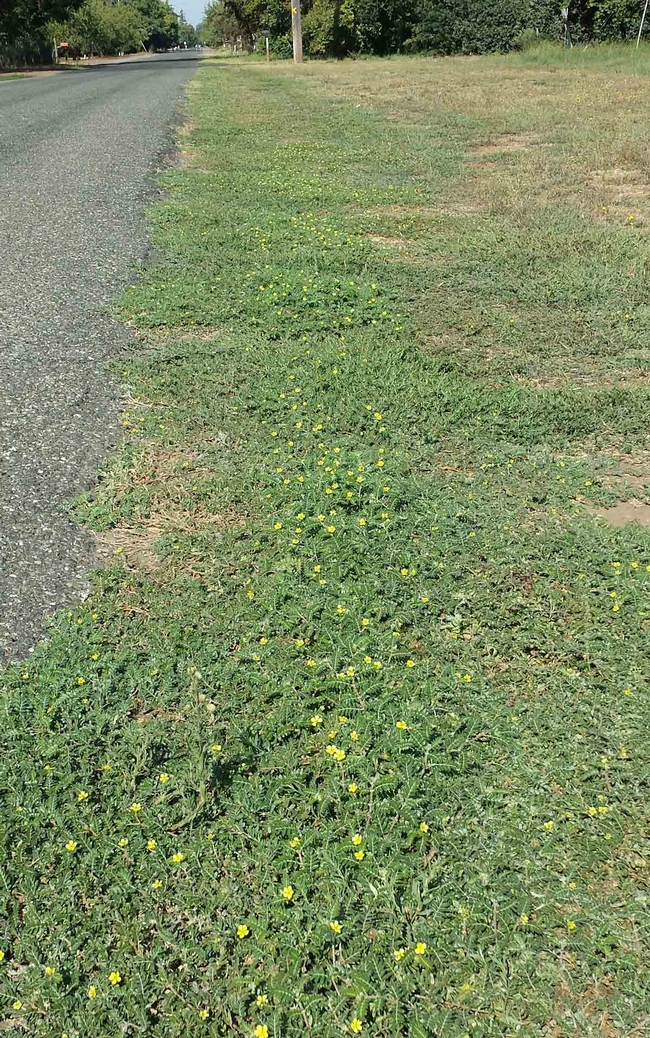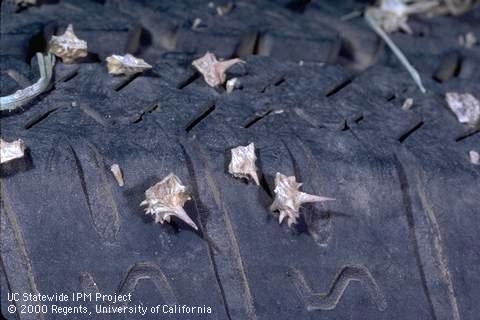Puncturevine (Tribulus terrestris) is an attractive green plant with small yellow flowers commonly seen growing prostrate along the side of the road. A native to Southern Europe, it's also referred to as “goathead.” However, underneath its foliage lies danger: spiky seedpods with needle-point spikes. If puncturevine is stepped on, it is painful to bare feet and dogs' paws; it will pierce and flatten bicycle tires. Because of its spiky seedpods puncturevine is also referred to as “caltrop,” after the spiked metal devices thrown on the roadway to stop vehicles. Caltrops have four projecting spikes with one spike always pointed up; just in the right position to puncture a tire or flip-flop, hence the similarity to puncturevine seedpods.
Puncturevine raditing from taproot. Jeanette Alosi
Puncturevine flowers. Jeanette Alosi
Unfortunately, there are is no easy way to control this noxious weed. For most homeowners, the mechanical control methods of hand removal or cutting the plant off at the taproot are most effective. Any seeds left on the ground must be removed by raking or sweeping. Use heavy gloves to protect hands from the spiky seedpods. Of course, as with any weed, it's best to remove it before it flowers and sets seeds. This is especially important for puncturevine, as seeds are viable for years, and can be spread by shoes or the wheels of lawn mowers or carts.
Puncturevine seedpods. Jeanette Alosi
Biological control using several species of weevils have been tried but are not always effective. Chemical control of puncturevine in the home garden is often unnecessary. However, in heavily infested areas, or when hand removal is difficult, herbicide may be an option.
For more information on puncturevine see the IPM Pestnote No. 74128 on Puncturevine.
Puncturevine along road. Jeanette Alosi
